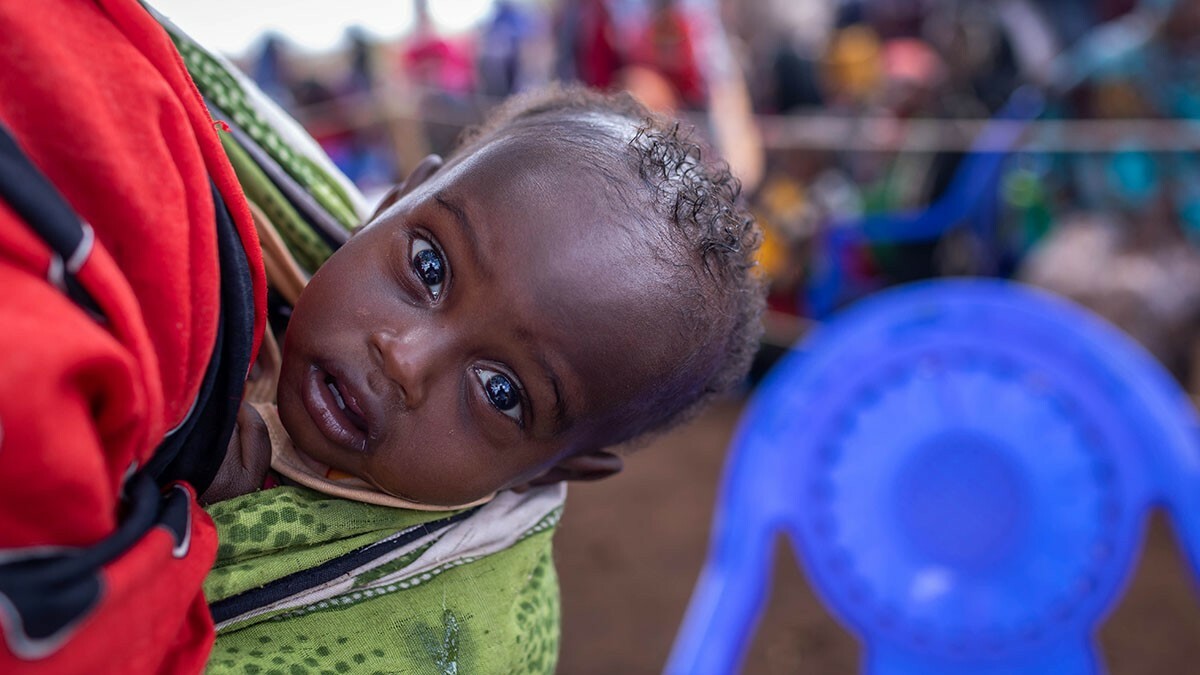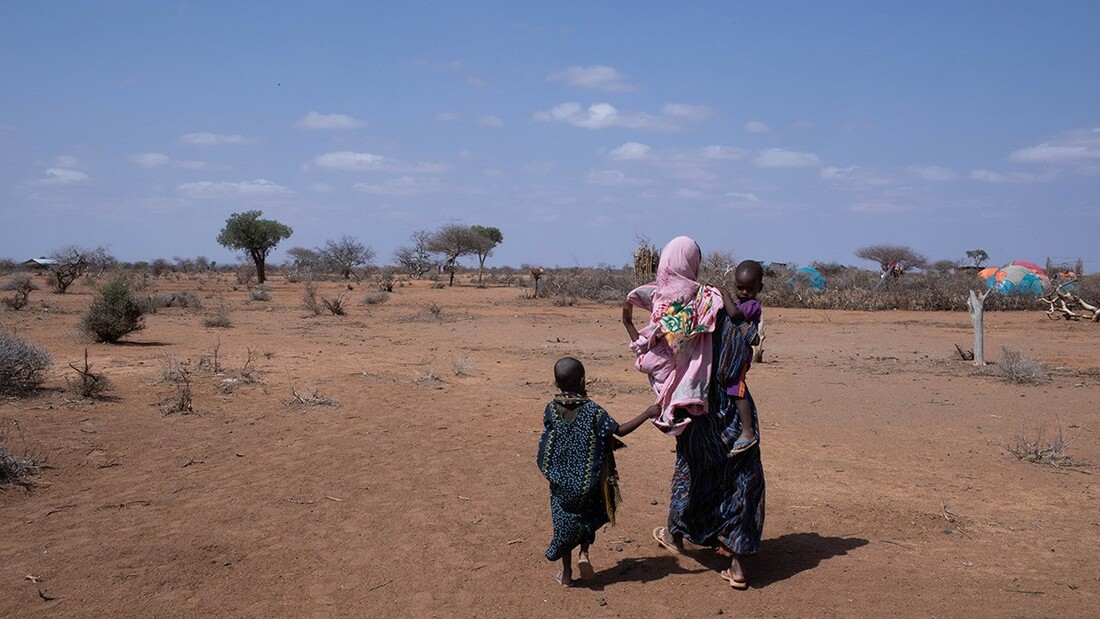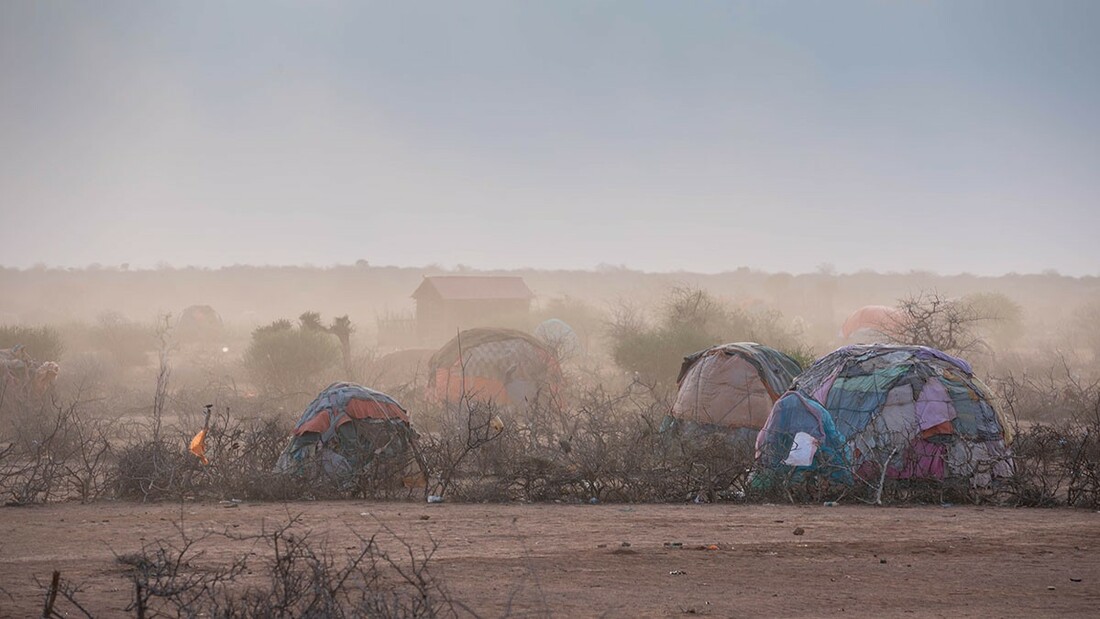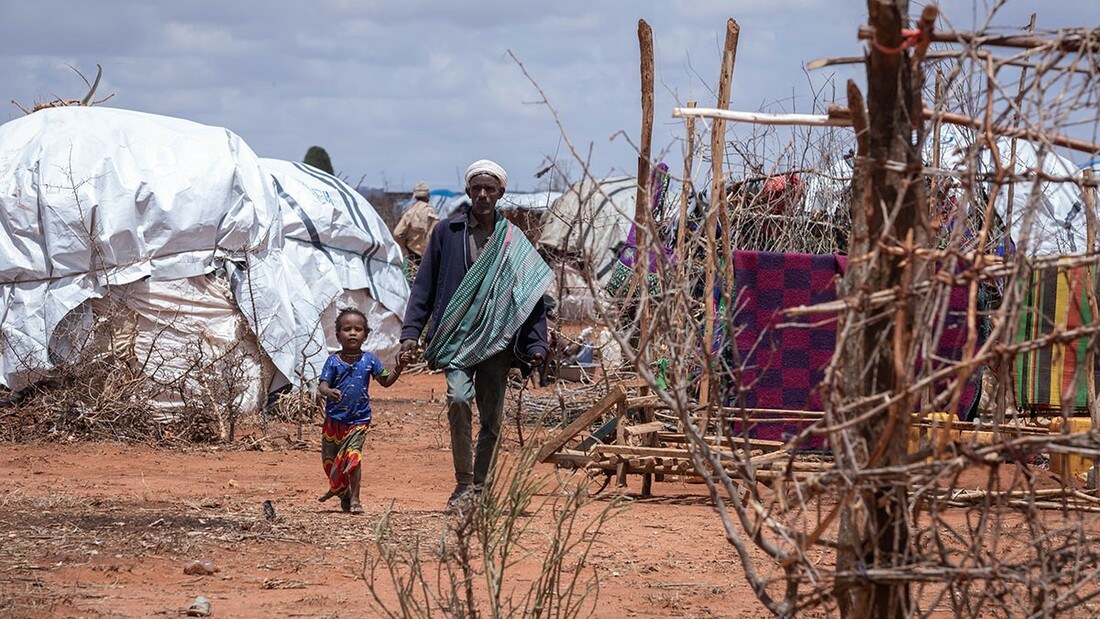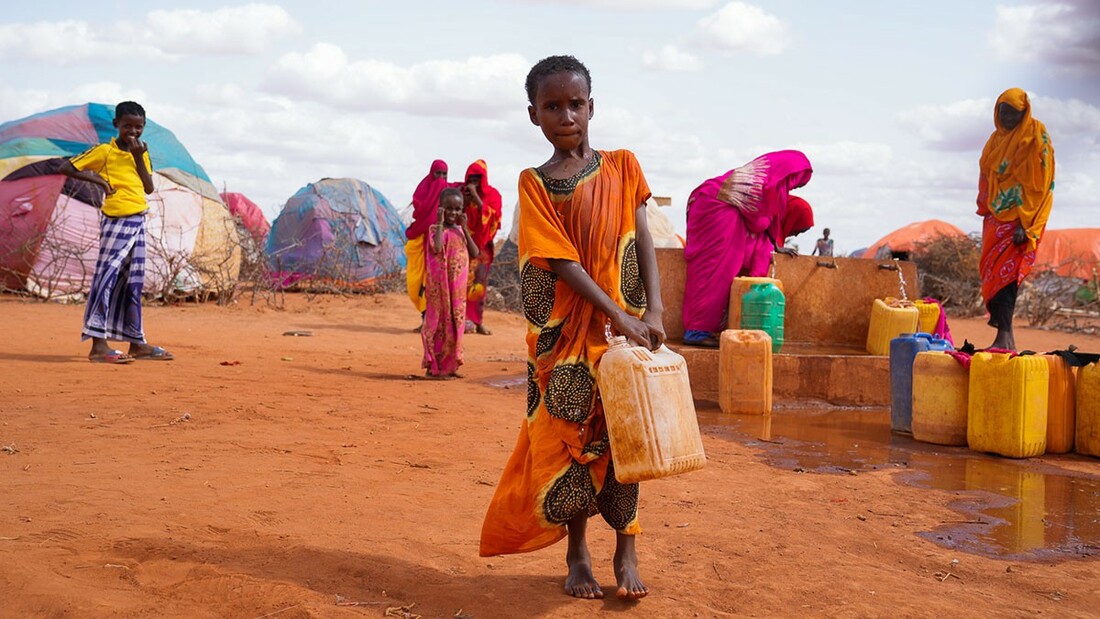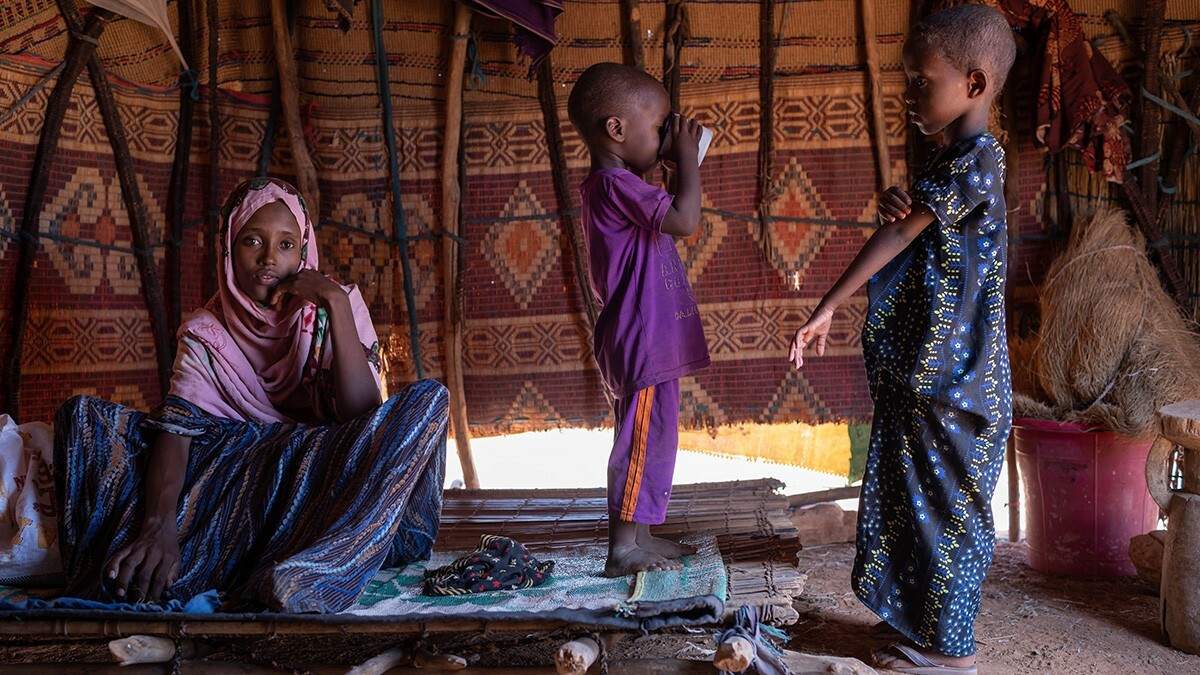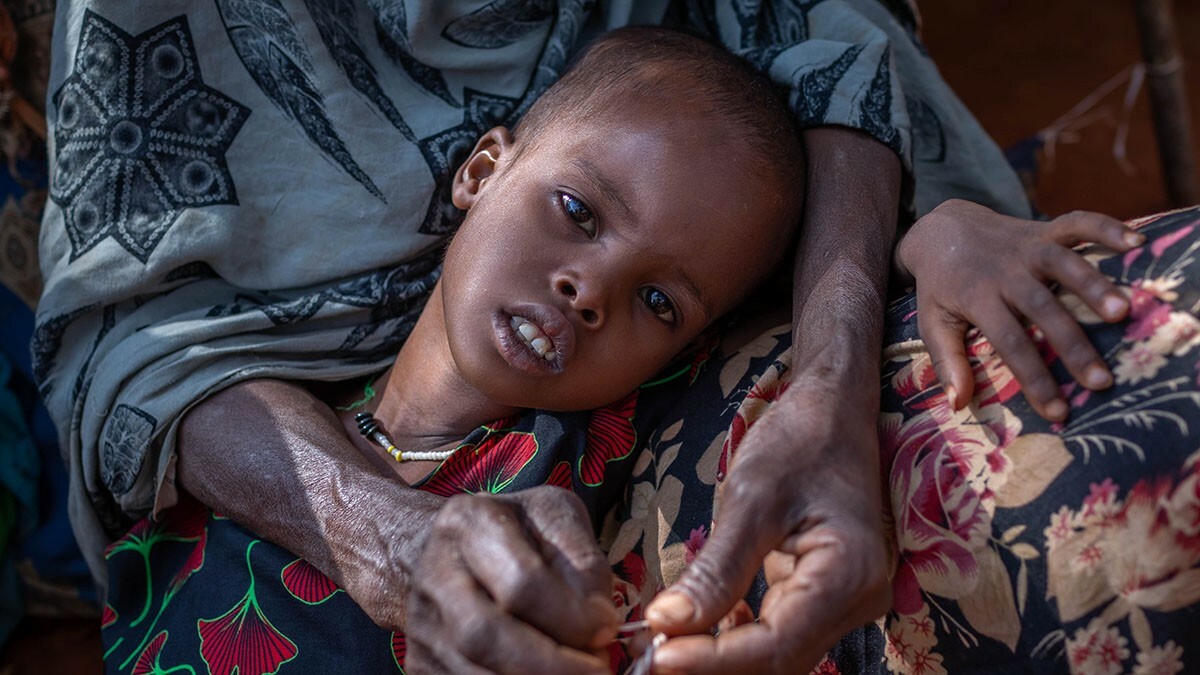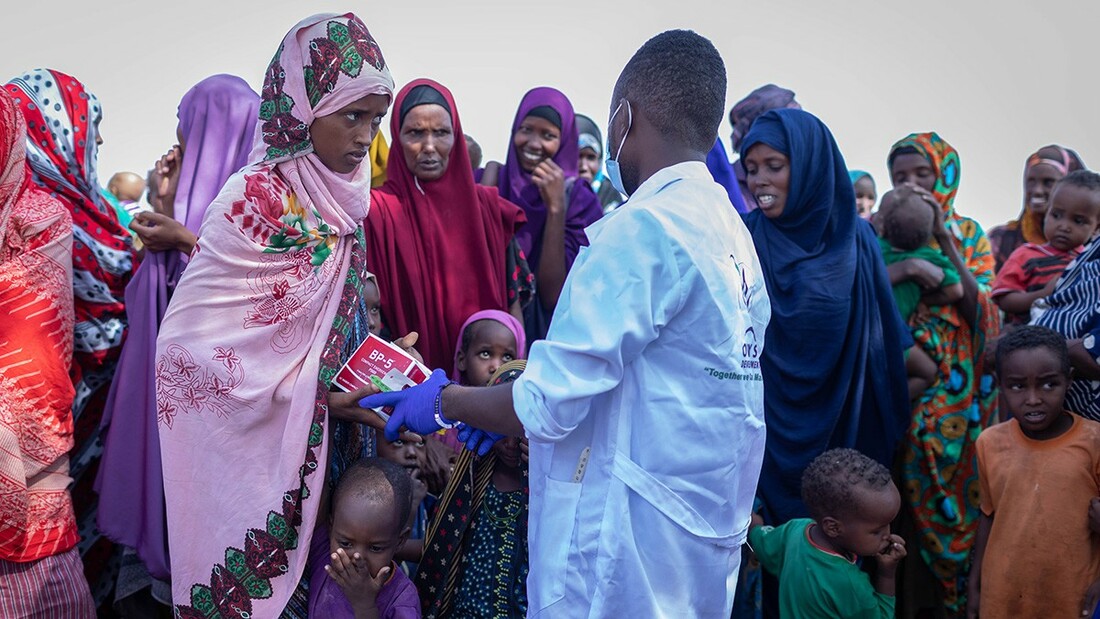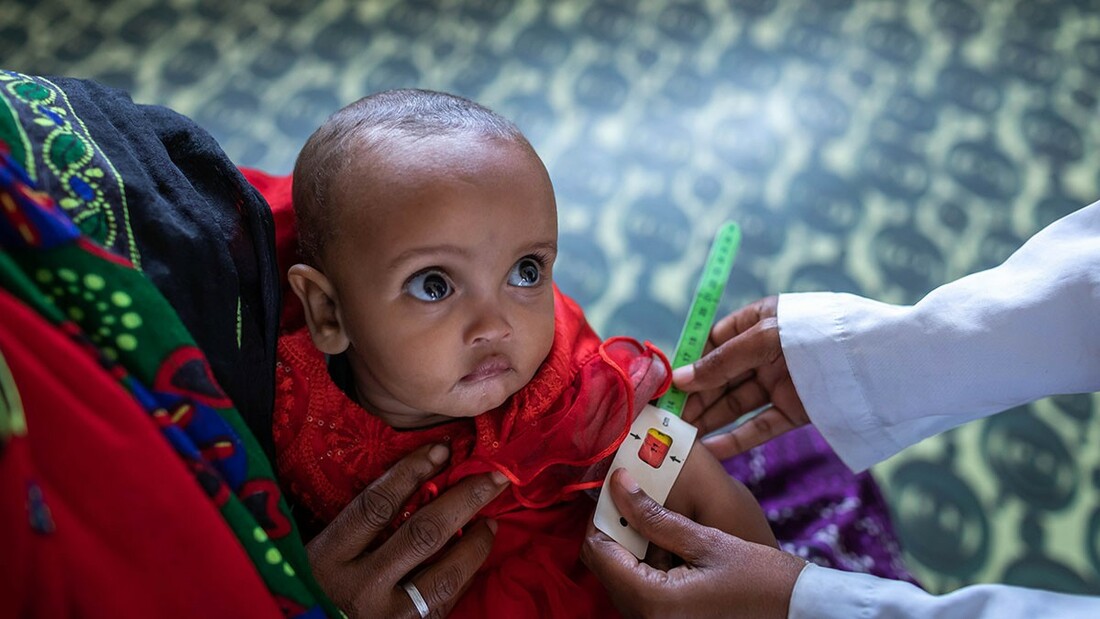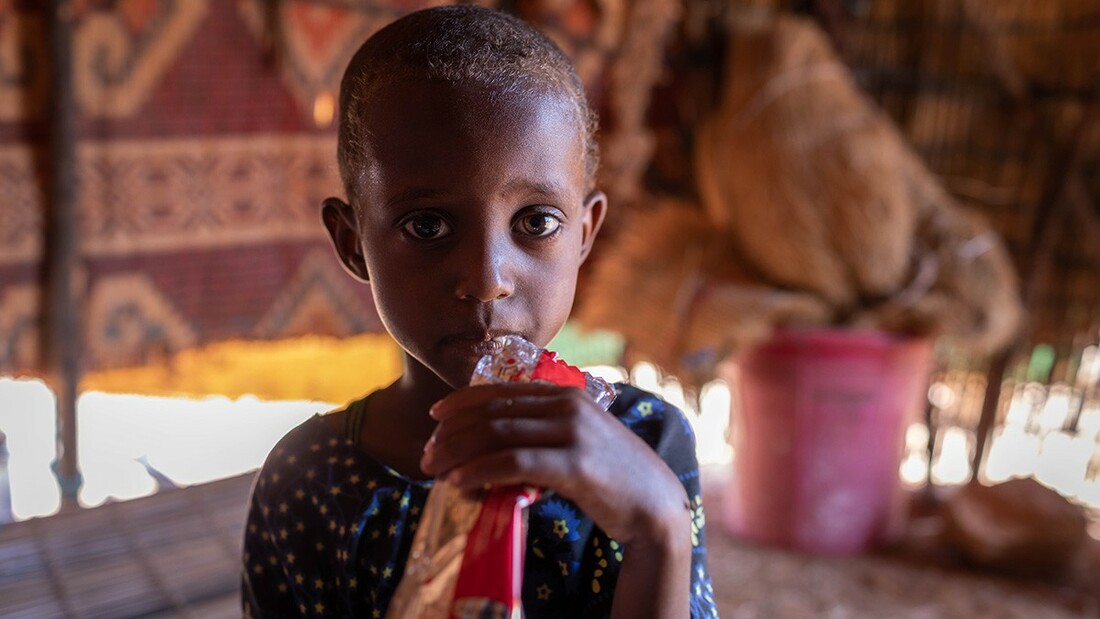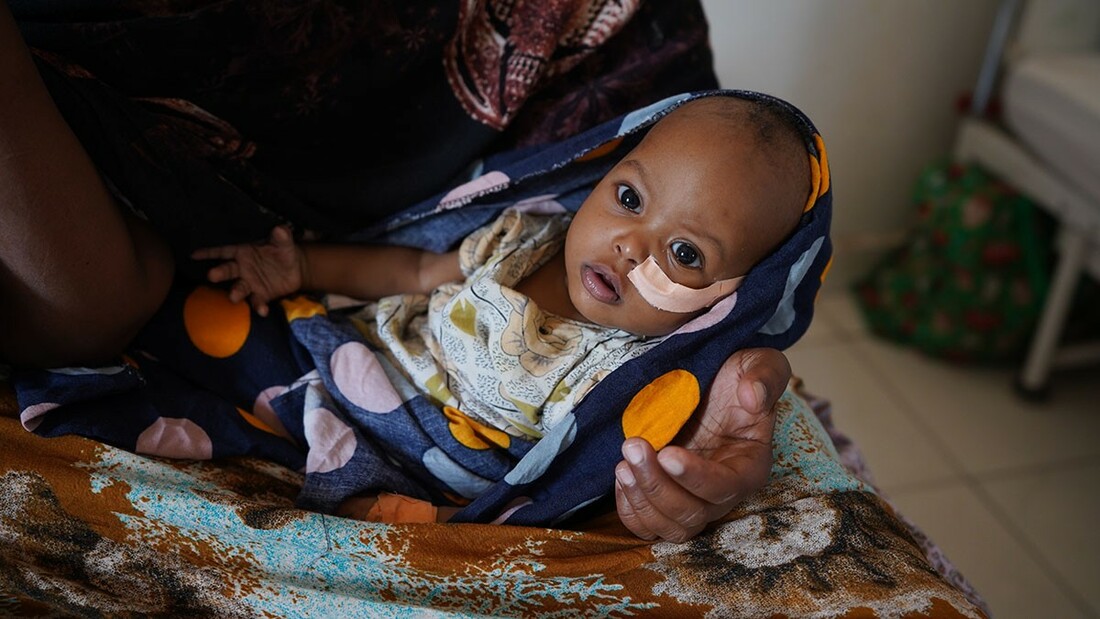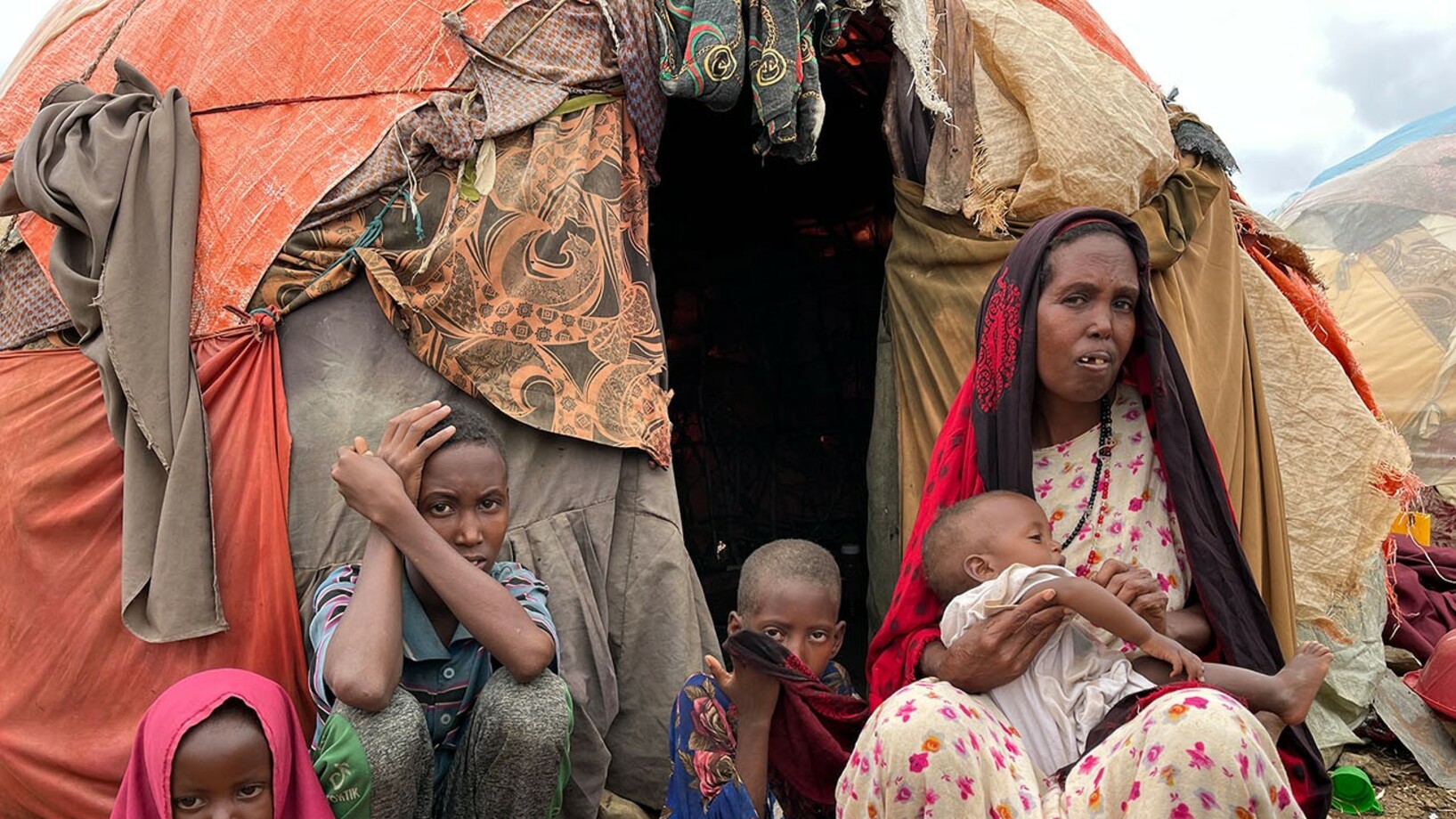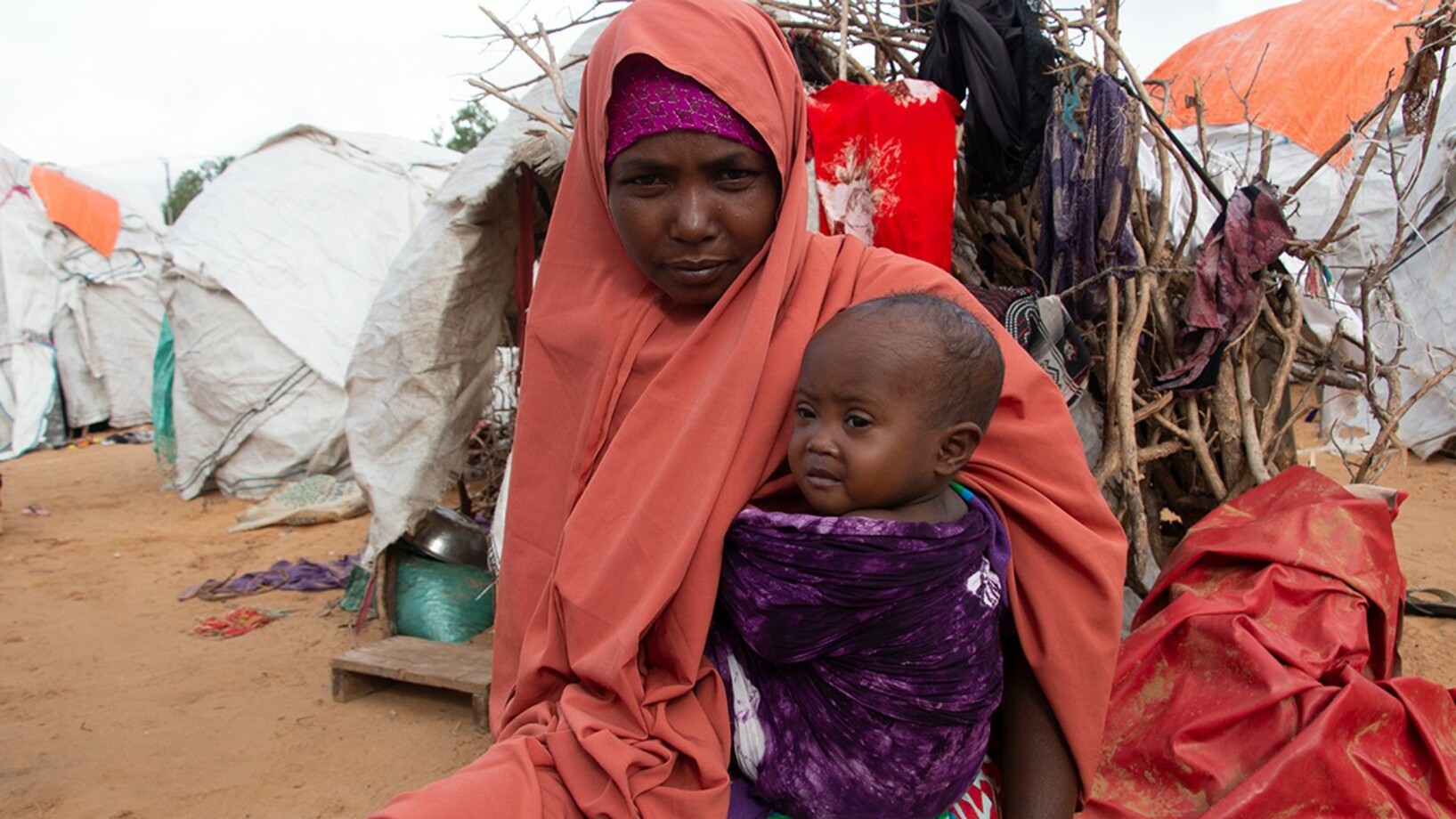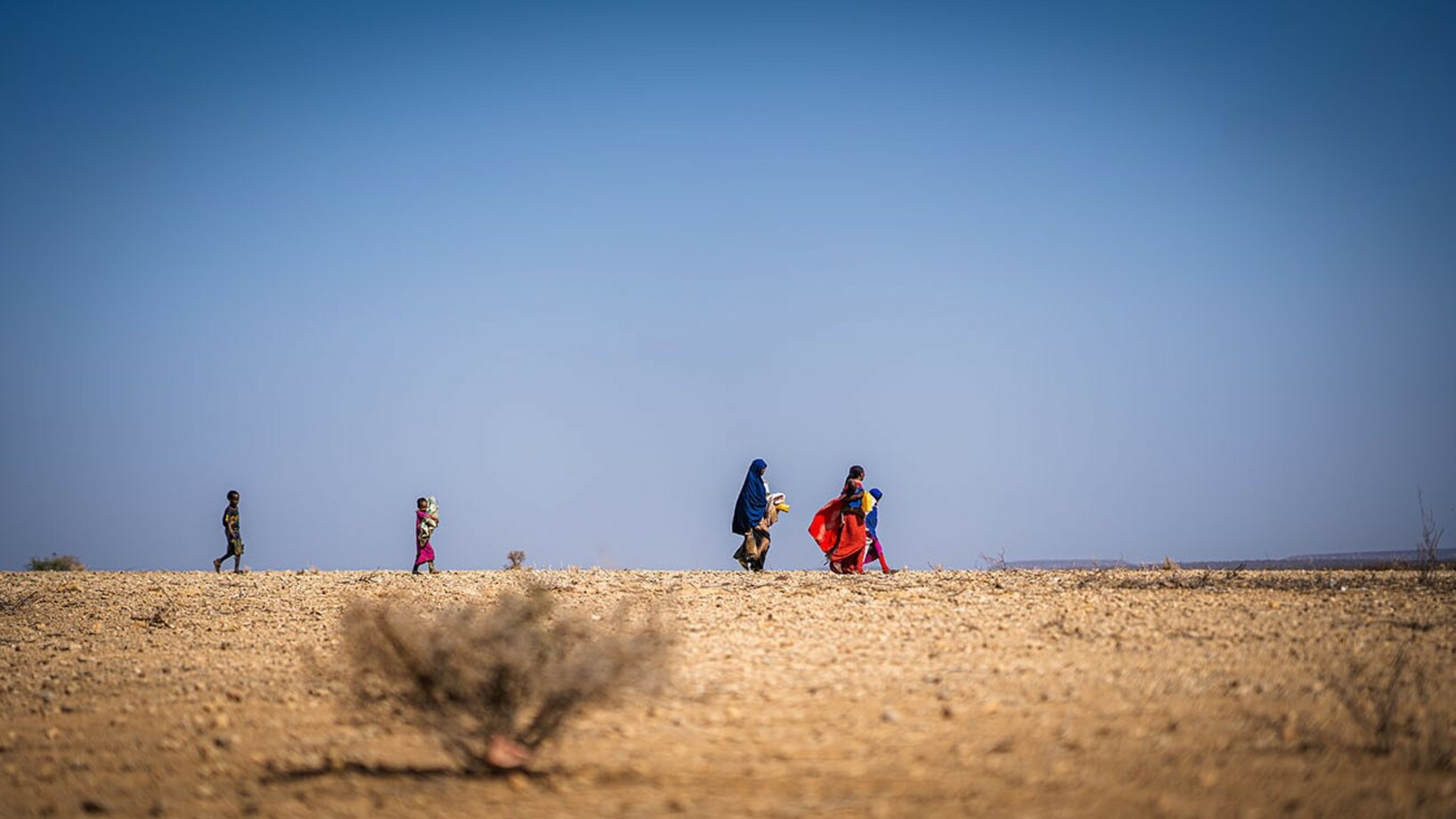The people of East Africa are currently experiencing the worst drought in 40 years. The impending fifth dry period in succession has resulted in the widespread destruction of both livestock and crops, and caused water sources to dry up. Ethiopia, Somalia and northern Kenya are facing a climate-related catastrophe that poses a drastic threat to the existence of 20 million people. Young mother Eshe, who is fighting for the survival of her children, is one of them.
No water for miles
Water scarcity is pushing more than 8.5 million people in East Africa, including 4.2 million children, to the brink of existence. Without water, crops cannot grow and livestock die. People are therefore forced to leave their homes in search of nutritious food and drinking water: More than 1.5 million people are currently displaced due to the ongoing drought in East Africa. Eshe and her children are among them. They also had to travel long distances to ensure their survival.
After a long walk, they reach the Hargle camp for internally displaced persons in Ethiopia. “We came here to look for food and water. It hasn’t rained for a long time, and our animals have all died. We can’t sell them or eat them”, explains the young mother. Entire communities in East Africa are being pushed to the edge of their existence. Not only in Hargle, but also in the Dubluk camp for internally displaced persons, thousands of people are living in catastrophic conditions.
For women and their children especially, living far from home carries additional risks. In emergency shelters they often face dangers such as violence or abuse. Women and children also bear primary responsibility for collecting drinking water. The dry soil means their journeys are getting longer and longer, and they often find themselves in unsafe areas far from home. They are forced to walk for miles in search of water and food, which in addition to the dangers can also lead to exhaustion and dehydration. The lack of drinking water means they often have no choice but to drink from contaminated water sources. Ten-year-old Hibo from Somalia also had to flee due to the extreme drought. “We left our home in Guriel and walked for ten days to reach Kaharey camp”, she says. In the camp, she finally has access to clean drinking water.
Little Abdusemed Mohammed is finally drinking clean water again in the temporary emergency camp in Ethiopia. His mother, Eshe, is still concerned about her children’s health and futures. How long they will continue to have access to drinking water is uncertain. A lack of access to clean water drastically threatens children’s chances of survival. Water scarcity increases the risk of diarrhea, one of the leading causes of death in children under the age of five, and can lead to diseases such as cholera.
Hunger and thirst go hand in hand
The food situation is becoming increasingly catastrophic, and cases of malnutrition are rising at an alarming rate. In Ethiopia, Kenya and Somalia in particular, more than 1.8 million children are in urgent need of treatment for life-threatening, severe acute malnutrition. Eshe’s four-year-old daughter Nura is one of them. A total of 16 million people in East Africa are affected by food insecurity, yet none of the countries have officially declared a famine.
But what exactly does the term famine mean?
In everyday language, we are quick to talk about a famine when a country is experiencing a severe food shortage and countless people do not have access to food. Officially, the United Nations or the respective government of a country only declare a state of emergency if certain criteria apply to the food situation on the ground.
The basis for this is an assessment by an international working group according to the Integrated Food Security Phase Classification (IPC). This food security scale distinguishes between five severity phases, from “Minimal” (phase 1) to “Stressed”, “Crisis”, “Emergency” and “Famine” (phase 5).
Famine is therefore classed as a serious food emergency and is subject to the following criteria:
- At least one in five households in the region have almost no food and/or other essential food items such as drinking water.
- Large numbers of people are starving, malnourished and dying from the consequences of malnutrition (at least 2 people per 10,000 inhabitants per day).
- More than 30 percent of children under the age of five are acutely malnourished.
Even without an official declaration of famine, however, many children are in great danger. Food insecurity is particularly acute, for example in Ethiopia, where around 17 million people do not know when they will be able to eat their next meal. In Tigray alone, more than 13 percent of all children are malnourished, as are around half of all pregnant and nursing women.
Eshe Omer is also five months pregnant with her third child, and is worried about her health. It is not uncommon for women to die in childbirth or give birth to children who are far too small and weak. Children’s physical and mental development often suffers long-term damage that can no longer be reversed. UNICEF is working with local partners to support women like Eshe and children’s families in the best possible way. In the Hargle camp for internally displaced persons, for example, the OWS Development Fund is working with UNICEF to provide life-saving health and nutrition services for the areas affected by the drought. Families undergo medical examinations at the camp and are given emergency biscuits and therapeutic food made from reeds.
Climate change hasn’t gone away
Climate change leads to unpredictable fluctuations in temperature and precipitation, which are likely to increase in terms of both their frequency and their intensity. UNICEF is therefore providing vital aid for children and their families in East Africa. Rescue measures are being introduced in the areas of health, nutrition, vaccination, education, water supply and sanitation in particular, along with measures to protect children and women against the risk of violence and abuse. However, recurring droughts and increasing water insecurity call for long-term investment in water, sanitation and hygiene services, water management and climate-proof infrastructure. UNICEF is working to implement these solutions in order to guarantee the security of the water supply at all times and for all concerned.
